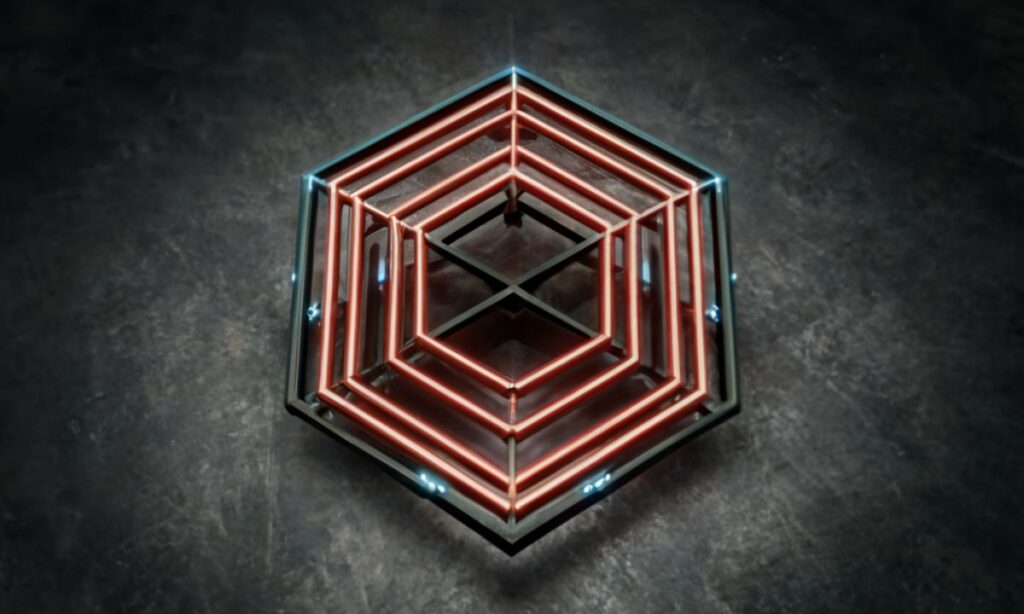Shape:yl6axe4-ozq= Pentagon is an intriguing term that piques the interest of both geometry enthusiasts and curious learners. The pentagon, a five-sided polygon, has significant importance in mathematics, architecture, and art. This article delves deep into the concept, applications, and fascinating aspects of the pentagon shape.
Table of Contents
The Basics of a Shape:yl6axe4-ozq= Pentagon
A Shape:yl6axe4-ozq= Pentagon is a polygon with five edges and five vertices. The term “pentagon” is derived from the Greek words “penta,” meaning five, and “gon,” meaning angle. There are various types of pentagons, including regular, irregular, convex, and concave pentagons.
Regular Shape:yl6axe4-ozq= Pentagon
A regular Shape:yl6axe4-ozq= Pentagon has all sides of equal length and all internal angles equal to 108 degrees. The symmetry and uniformity of a regular pentagon make it a subject of interest in various fields.

Irregular Shape:yl6axe4-ozq= Pentagon
An irregular pentagon does not have equal sides or angles. The sides and angles can vary, creating a unique shape each time. Despite its irregularity, it still possesses five sides and vertices.
Convex Shape:yl6axe4-ozq= Pentagon
In a convex pentagon, all internal angles are less than 180 degrees, and none of its sides bend inward. This type of pentagon is more common in practical applications.
Concave Shape:yl6axe4-ozq= Pentagon
A concave pentagon has at least one internal angle greater than 180 degrees, causing one or more sides to bend inward. This shape is less common but still notable in specific geometric studies.
Mathematical Properties of a Shape:yl6axe4-ozq= Pentagon
Understanding the mathematical properties of a pentagon is crucial for its application in various fields. These properties include the sum of internal angles, the perimeter, and the area.
Sum of Internal Angles
The sum of the internal angles of a pentagon is always 540 degrees. This can be calculated using the formula for the sum of internal angles of a polygon: (n-2) × 180, where n is the number of sides. For a pentagon, n equals 5, so the sum is (5-2) × 180 = 540 degrees.
Perimeter
The perimeter of a pentagon is the total length of its five sides. For a regular Shape:yl6axe4-ozq= Pentagon with side length ‘a,’ the perimeter is 5a. For an irregular pentagon, the perimeter is the sum of the lengths of all its sides.
Area
The area of a regular pentagon can be calculated using the formula: Area=145(5+25)a2\text{Area} = \frac{1}{4} \sqrt{5(5+2\sqrt{5})} a^2Area=415(5+25)a2 where ‘a’ is the side length. For irregular pentagons, the area can be determined by dividing the shape into simpler geometric shapes and summing their areas.
Applications of Shape:yl6axe4-ozq= Pentagon
The pentagon shape is not just a theoretical concept; it has practical applications in various fields, including architecture, art, and nature.
Architecture
Pentagons are used in architectural designs for their aesthetic appeal and structural stability. The Pentagon building in Arlington, Virginia, is a famous example. Its unique shape makes it an iconic structure with a functional layout.
Art
Artists often incorporate pentagons into their work to create visually appealing patterns and designs. The symmetry of a regular pentagon and the versatility of irregular pentagons provide endless creative possibilities.
Nature
Pentagons can be found in nature, from the arrangement of certain flowers to the structure of microscopic organisms. The starfish, for instance, often has a pentagonal shape, showcasing the natural occurrence of this geometric figure.
Fascinating Facts About Shape:yl6axe4-ozq= Pentagon
Pentagons hold various interesting facts that make them a subject of fascination.
The Golden Ratio
A regular pentagon contains the golden ratio, a mathematical ratio often found in nature and art. The ratio of a diagonal to a side in a regular pentagon is the golden ratio, approximately 1.618.
Pentagonal Numbers
Pentagonal numbers are figurate numbers that extend the concept of triangular and square numbers to the pentagon. The nth pentagonal number is given by the formula: Pn=3n2−n2P_n = \frac{3n^2 – n}{2}Pn=23n2−n These numbers have interesting properties and applications in number theory.
Penrose Tiling
Penrose tiling is a non-repeating tiling pattern that uses two shapes, one of which is a pentagon. This tiling pattern has unique mathematical properties and is used in various applications, including quasicrystals.

Pentagons in Modern Technology
Shape:yl6axe4-ozq= Pentagon also play a role in modern technology and engineering.
Structural Design
Engineers use pentagonal shapes in the design of various structures, including buildings, bridges, and components of machines. The pentagon’s stability and aesthetic appeal make it a preferred choice in many designs.
Graph Theory
In graph theory, a branch of mathematics, pentagonal structures are used to study networks and connections. The properties of pentagons help in understanding complex systems and optimizing network designs.
Educational Importance of Shape:yl6axe4-ozq= Pentagon
Teaching the properties and applications of pentagons is essential in education. It helps students understand fundamental geometric concepts and develop problem-solving skills.
Geometry Lessons
Pentagons are a fundamental part of geometry lessons, helping students grasp the properties of polygons. Understanding the angles, sides, and symmetry of pentagons lays the foundation for more advanced geometric studies.
Real-World Applications
Learning about the real-world applications of pentagons makes geometry more relatable and interesting for students. It shows how theoretical concepts can be applied in practical scenarios, from architecture to nature.
Conclusion
Shape:yl6axe4-ozq= Pentagon is more than just a geometric figure. Its properties, applications, and fascinating aspects make it a subject of interest in various fields. From architecture to art, nature to modern technology, pentagons play a crucial role. Understanding this shape enhances our knowledge of geometry and its applications, making it a vital part of education and practical design.

FAQs About Shape= Pentagon
What is Shape= Pentagon?
Shape= pentagon is a term used to refer to the geometric shape known as the pentagon. A pentagon is a five-sided polygon with five vertices. This shape can be regular, with all sides and angles equal, or irregular, with varying side lengths and angles.
What are the Types of Pentagons?
There are several types of pentagons:
- Regular Pentagon: All sides and angles are equal.
- Irregular Pentagon: Sides and angles are not equal.
- Convex Pentagon: All internal angles are less than 180 degrees.
- Concave Pentagon: At least one internal angle is greater than 180 degrees.
What are the Mathematical Properties of a Pentagon?
Key properties of a pentagon include:
- Sum of Internal Angles: 540 degrees.
- Perimeter: For a regular pentagon, it is 5 times the length of one side. For an irregular pentagon, it is the sum of the lengths of all sides.
- Area: For a regular pentagon, the formula is 145(5+25)a2\frac{1}{4} \sqrt{5(5+2\sqrt{5})} a^2415(5+25)a2, where ‘a’ is the side length.
Where are Pentagons Used in Architecture?
Pentagons are used in architectural designs for their aesthetic and structural qualities. The most famous example is the Pentagon building in Arlington, Virginia, which serves as the headquarters of the United States Department of Defense.
How are Pentagons Used in Art?
Artists incorporate pentagons in various designs and patterns due to their symmetry and visual appeal. The use of pentagons can be seen in different art forms, from traditional artwork to modern graphic designs.
Can Pentagons Be Found in Nature?
Yes, pentagons can be found in nature. Examples include the structure of certain flowers and the body shape of starfish. These natural occurrences highlight the pentagon’s aesthetic and structural properties.
What is the Golden Ratio in a Pentagon?
In a regular pentagon, the ratio of a diagonal to a side is the golden ratio, approximately 1.618. This ratio is often found in nature and art, contributing to the pentagon’s pleasing proportions.
What are Pentagonal Numbers?
Pentagonal numbers are figurate numbers representing pentagons. The nth pentagonal number is given by the formula Pn=3n2−n2P_n = \frac{3n^2 – n}{2}Pn=23n2−n. These numbers have interesting properties and applications in number theory.
What is Penrose Tiling?
Penrose tiling is a non-repeating tiling pattern that uses pentagons and other shapes. This tiling has unique mathematical properties and applications in fields like quasicrystals and theoretical physics.
How are Pentagons Used in Modern Technology?
Pentagons are used in structural designs, graph theory, and network analysis. Their geometric properties help optimize designs and understand complex systems.
Why are Pentagons Important in Education?
Pentagons are essential in teaching fundamental geometric concepts. Learning about pentagons helps students understand polygon properties, symmetry, and real-world applications in various fields.
What are Some Interesting Facts About Pentagons?
- Symmetry: A regular pentagon has five lines of symmetry.
- Golden Ratio: Present in the ratio of diagonals to sides.
- Natural Occurrence: Found in starfish and certain flowers.
- Pentagonal Numbers: A special class of figurate numbers.
How Do Pentagons Appear in Everyday Life?
Pentagons appear in various everyday items, such as home designs, sports equipment (e.g., soccer balls), and decorative patterns. Their unique shape makes them versatile and visually appealing.
How Can I Calculate the Area of a Regular Pentagon?
To calculate the area of a regular pentagon, use the formula: Area=145(5+25)a2\text{Area} = \frac{1}{4} \sqrt{5(5+2\sqrt{5})} a^2Area=415(5+25)a2 where ‘a’ is the length of a side.
What Makes the Pentagon Shape Stable in Structures?
The pentagon shape distributes weight evenly across its five sides, providing stability and strength. This makes it a popular choice in architectural and structural designs.


